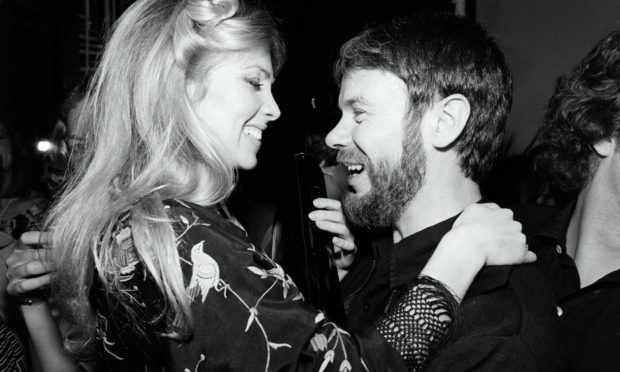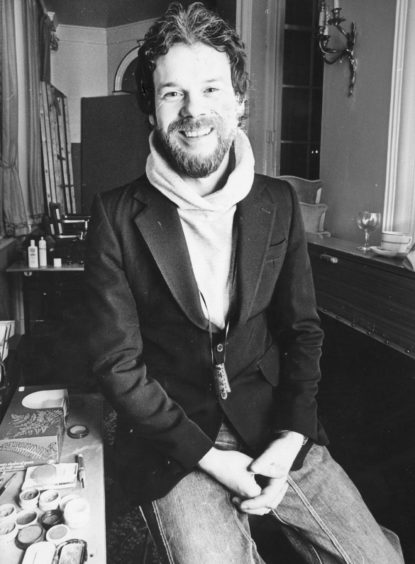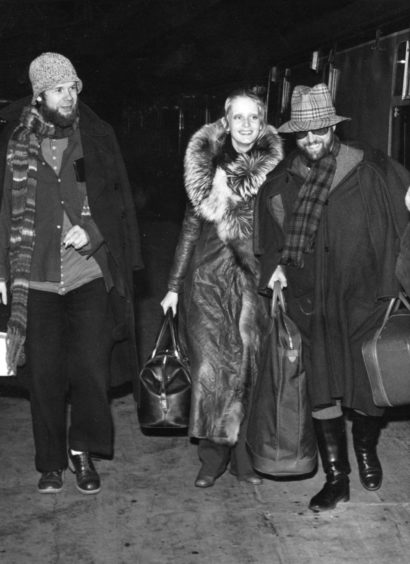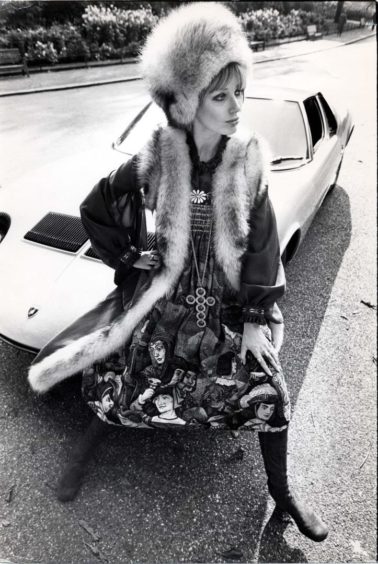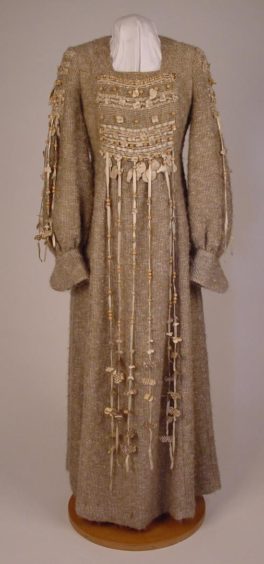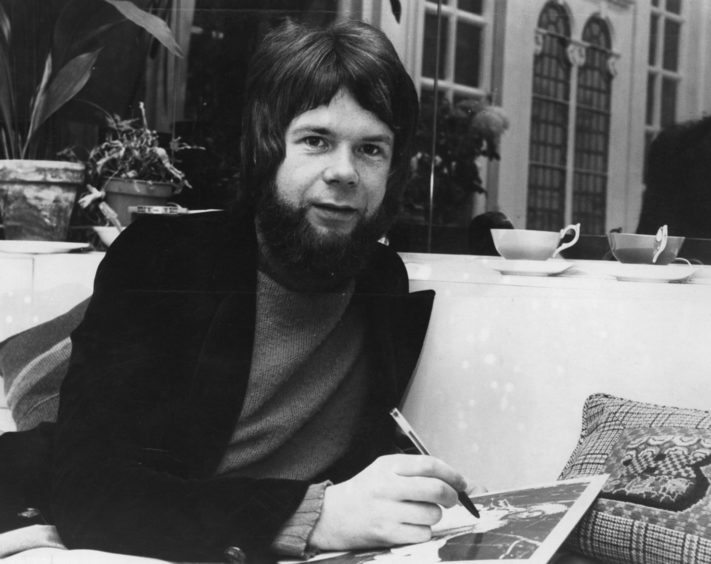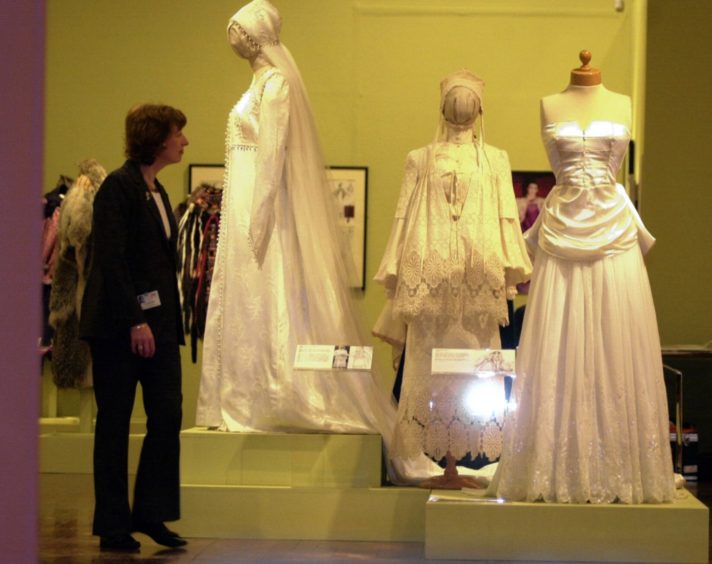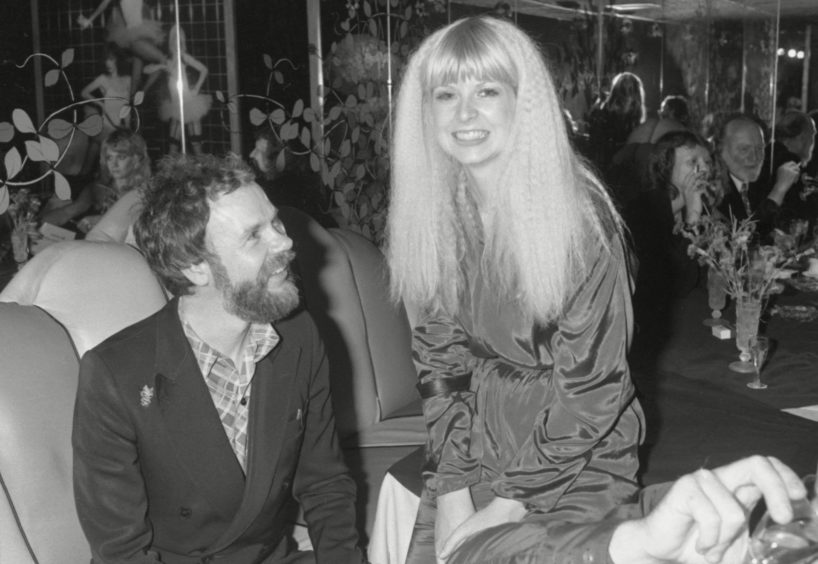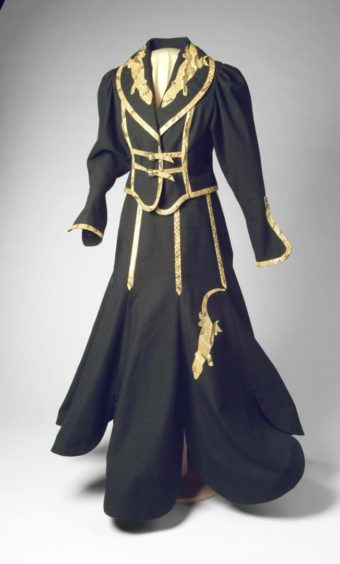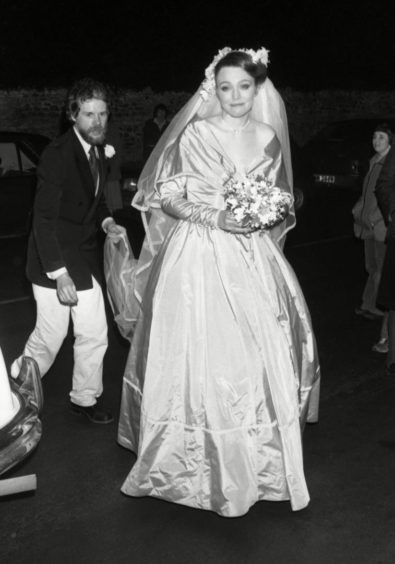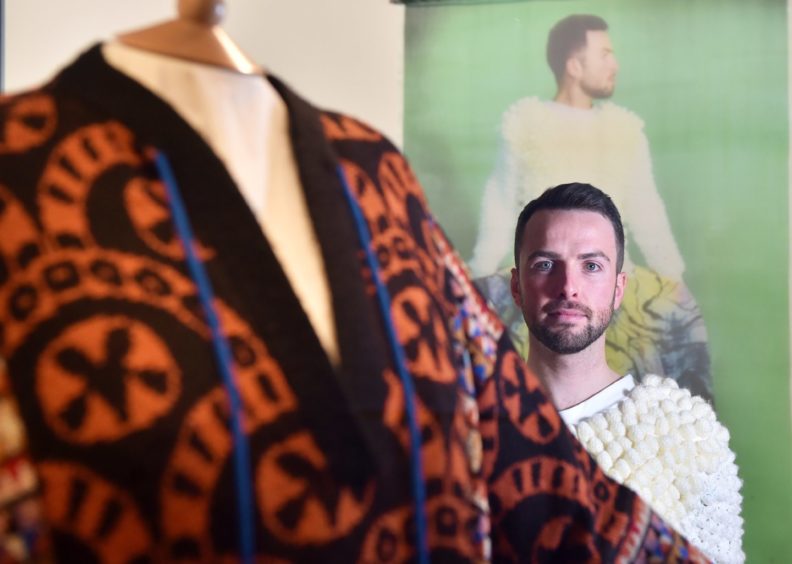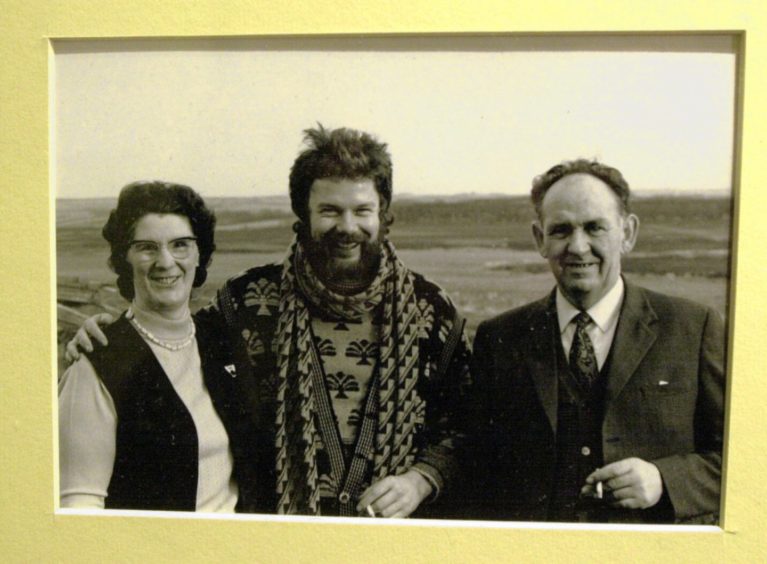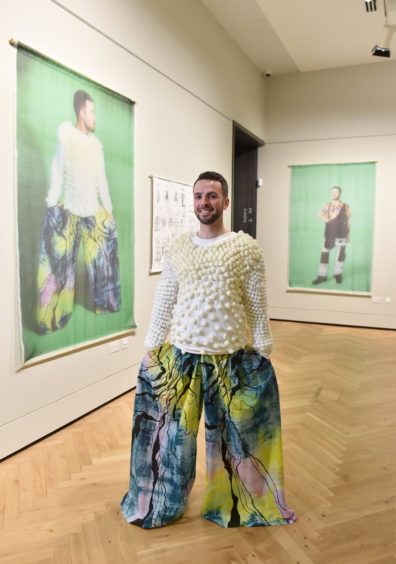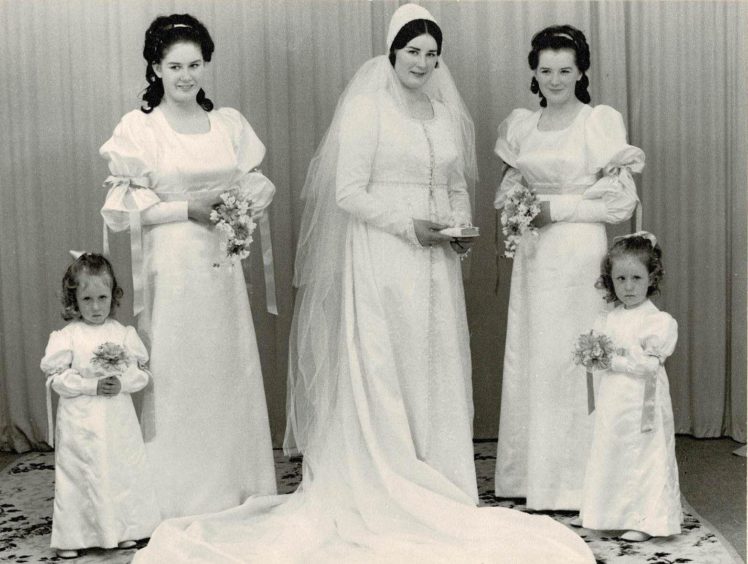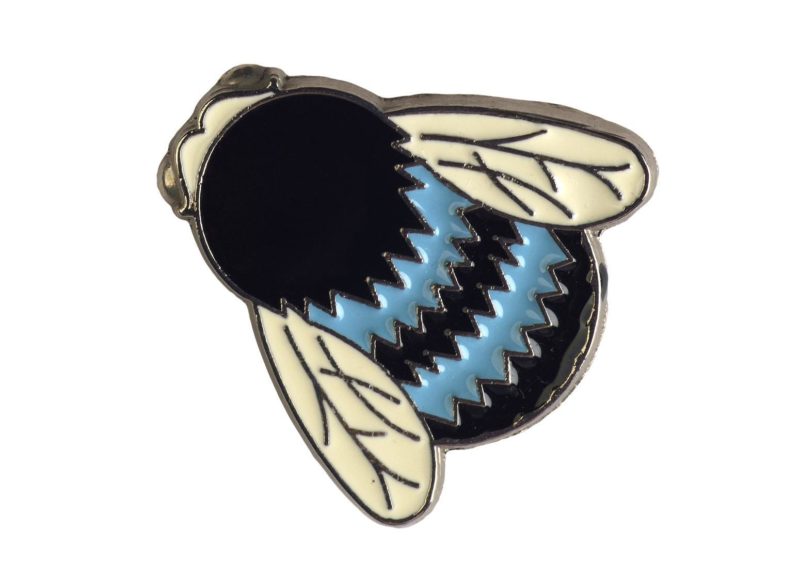He was one of the world’s most celebrated and pioneering fashion designers, dressing glamorous superstars of the day from Twiggy to Bianca Jagger and Elizabeth Taylor.
Not bad for a boy who grew up on a Buchan farm, one of seven children, who seemed more destined for life as a farmer than a global fashion icon in the late 60s and 70s when he burst onto the scene “like a firework”.
But for all his fame, Bill Gibb faded from memory in the decades after his untimely death in 1988 to the point where he was in danger of being forgotten.
Now a special symposium staged by Aberdeen Art Gallery and Gray’s School of Art this weekend aims to celebrate his life and put him back in the spotlight, even as he is being rediscovered by the Instagram generation.
Part of that will be celebrating the north-east influences which coloured the remarkable work of a man once hailed as the golden boy of the fashion world, said Christine Rew, the city’s art gallery and museums manager.
“The idea is to celebrate a local hero,” said Christine of the event, Fashion, Fantasy, Collaboration: The Legacy of Bill Gibb, being held tomorrow.
Amazing story of a Buchan lad
“We wanted to this amazing story of a lad who grew up on a farm in Buchan, who had this amazing drawing talent, that fortunately was spotted and nurtured and despite all the things that could have gone against him, he ended up going to London.”
Bill’s talent was obvious from an early age, as he grew up on the family farm, Lochpots, near Fraserburgh, said Christine. She has curated exhibitions on the designer at Aberdeen Art Gallery including Bill Gibb in 1990 and Bill Gibb – the Golden Boy of British Fashion’ in 2003, the year that would have marked his 60th birthday.
“He spoke, from an early age, about loving costume, drawing lots of historical figures and being much more interested in that than farming,” said Christine, who will give a keynote address at the symposium.
“His sisters talk about how he loved to dress them up and drape lots of wonderful fabrics around them. You could almost see the early beginnings of a fashion designer coming through in that. I think it was just an inborn skill he responded to, rather than putting it aside and going to what may have been considered the traditional route of farming.”
Fortunately, Bill’s talent was recognised and encouraged, firstly by a teacher at Fraserburgh Academy, Bob Duthie, who encouraged him to take it further, then by his tutors at St Martin’s College in London who helped nurture and nourish his skills.
Christine said: “What was really exciting about him when he first burst onto the fashion scene like a firework was he was pioneering of mix of pattern, mix of different fabrics, mix of textures.
Colours of the sea and fields
“So 1969-70 might have seen him produce a dress that combined silk chiffon sleeves with a linen bodice, with a checkerboard waist band with a woollen skirt, tassels and beads. This was at a time when mainstream fashion was those short, sharp pared-down styles we associate with people like Mary Quant.”
Christine said Bill had many talents, working in both eveningwear and daywear, but also collaborating with leading textile guru Kaffe Fassett to produce stunning knitwear, all with his trademark glamour, drawing from historical dress, European folk costumes, fusing them together.
Underlying it all, though, was his north-east childhood, said Christine.
“It would be obvious to talk about his use of tartan, plaid, tweed – heritage fabrics, many of which would have been woven in Scotland. But for me it is much more into the colour palette he used.
“There’s a whole range of soft muted colours you see coming through, even in his early collections, right through to the end of his career. I think that is the landscapes he saw around him growing up, both in the fields and the sea. You can see the colours of the sea coming through in all its dark colours of the winter, then the bright blues. You can see pebble-coloured shades and also the lovely soft shades of the fields in autumn.”
His work took the world by storm in the heady days of the 70s, garnering Bill high profile clients.
“There was a whole range of clients, but I suppose particularly we would say Twiggy,” said Christine. “He dressed her for the premiere of The Boyfriend, the film she starred in. He did two outfits, one for the Los Angeles premiere and one for the London premiere, in 1971.
“Twiggy went on to wear his outfits throughout much of her career. You see her at different times modelling Bill Gibb for Vogue. I have an image of her promoting the Mini car and she’s wearing Bill Gibb knitwear. She obviously loved it.”
Lulu was married in a Bill Gibb wedding dress, and other famous clients include Marie Helvin, Bianca Jagger and actress Hannah Gordon.
‘Billy gowns’ made you feel great
“He understood how to create clothes that flattered the female body and were eminently wearable. That’s why his clients keep coming back and saying that they loved their ‘Billy gowns’. Once you had those in your wardrobe that was the dress to go to for those occasions where you wanted to feel great.”
Even at his height, Bill never forgot his roots. He staged fashion shows here in the north-east, both in Aberdeen’s Cowdray Hall and in the Royal Darroch Hotel at Cults, bringing top models from London up with him.
Christine said: “His family certainly talk about him coming back to recharge regularly and just soaking up the calm of the north-east of Scotland, as opposed to the buzz and quick paced lifestyle of London.”
However, Bill’s star began to fade towards the end of the 70s and his business ventures were faltering.
Christine said: “Partly, that was the zeitgeist of that time. Power dressing was in. Bill’s strength lay in a more fantasy approach, a love of evening wear, a love of embellishment, lots of sequins and decorations. That was just slightly out of step.”
In 1988, after a long battle with illness, Bill succumbed to bowel cancer. Christine believes that the fashion world at the time didn’t realise just what it had lost.
She said: “I suspect if he hadn’t been so ill in the 80s, he would have been able to successfully translate into maybe designing for stage and weathered the financial storm. My feeling is he was largely forgotten, except by those who loved his costumes. It is interesting a number of designers now would look back now and say Bill was a huge influence. Alexander McQueen, for example.”
Christine said his work is now undergoing a revival with Bill Gibb vintage costumes showing up regularly on Instagram, as a new generation discover his talent, with the trend for mixing and matching fabrics and textures is back in fashion.
Students at Gray’s are also rediscovering Bill, influencing the next generation of designers.
She hopes the symposium will build on that, while celebrating Bill’s life. As an online event, Christine hopes it could tap into an international audience.
Bring back his amazing legacy
“What we are all trying to do and have been trying to do for a few years, is bring back to the public notice Bill Gibb’s amazing legacy and how that has influenced designers as they have come through in the 2000s and through this century.”
An added benefit might be unearthing more of Bill’s work to add to the gallery’s extensive collection of his drawings and costumes.
“Through this we might be able to track down more of his outfits that aren’t in the public realm at the moment,” she said.
“We would love to hear from people who have their own treasured Billy outfits. We’d love to hear reminisces and memories from people who know him or were clients who followed him from many years.”
The symposium is being held from 10.30am to 2.30pm tomorrow. Details can be found at https://www.aberdeencity.gov.uk/AAGM/whats-aberdeen-art-galleries-and-museums/fashion-fantasy-and-collaboration-legacy-bill-gibb
Glittering line-up to honour our
home-grown fashion icon
Almost every aspect of Bill Gibb’s life and work will be explored in tomorrow’s prestigious line-up from connections between the north-east designer and the Bay City Rollers to asking if he was the greatest showman.
Josie Steed, who will co-chair the event, and pulled together the line-up of speakers said experts, such as fashion writers, curators and academics were lining up to sing his praises.
“I put a call out nationally to find out if there would be interest, particularly in academics, but not restricted to them, to contribute to the conference. We got a fantastic response,” said Josie, course leader for BA (Hons) fashion & textile design at Gray’s School of Art.
“What was really fantastic was that we got some really renowned academics, who have been at the forefront of fashion and fashion curation who have already written on Bill Gibb. There are lots of different topics coming up.
Ahead of his time
“What we have really found is that Bill Gibb was very much ahead of his time.”
Topics include looking at Bill as a storyteller and dreamer, how folklore fashions bring comfort in turbulent times, as well as looking at him in relation to topics very much of today, such as sustainability and cultural appropriation.
The latter two come together in a discussion on Bill Gibb and the Bay City Rollers, linking the Scottish band’s love of kimonos, with Bill’s kimono designs.
One of the speakers tomorrow will be writer and performer Shane Strachan, who was commissioned for the Look Again festival in 2019 to create the spoken-word film and exhibition The Bill Gibb Line which was exhibited at the Aberdeen Art Gallery throughout 2020. It was Shane’s work that led to the symposium being staged.
One of the centrepieces of the event, though, will be a specially-recorded conversation with Bill’s sisters, Patsy, Janet and Marlyn.
An extraordinary person
Josie said: “I think this is going to be a real highlight. Just listening to them talk about his kind of references, using both fantastical things from storytelling, but also from his local environment. How he would see something on a beach, the texture of the sand or whatever and immediately think about it in relation to design, but also mix it up with a sort of Maid Marion theme. It is the collaging of ideas, which is so relevant to fashion today.
“His sisters said he was an ordinary person, but he was extraordinary person. It’s such a beautiful quote, it just sends tingles.”
She added the symposium would look at his influence on iconic designers such as Alexander McQueen and his contemporary, Zandra Rhodes, as well as his current revival with interest in his work growing on social media platforms.
On the back of contributions to the symposium, Josie is putting together a book on Bill’s work, set to be published by Bloomsbury.
She hopes both that publication and tomorrow’s symposium will add to Bill Gibb’s legacy.
“I think it will bring a new understanding of what he brings to contemporary fashion and society of today.”
